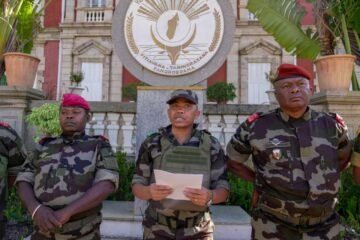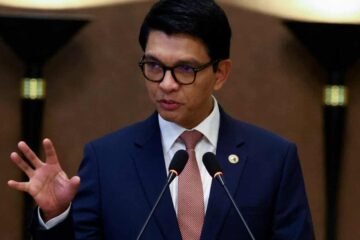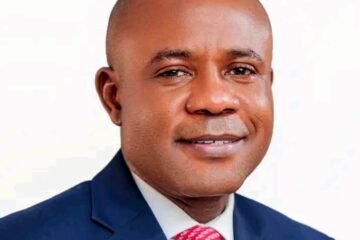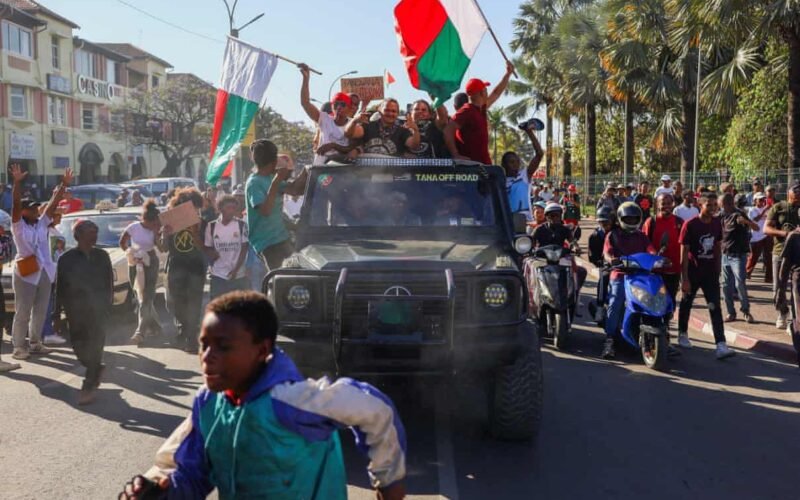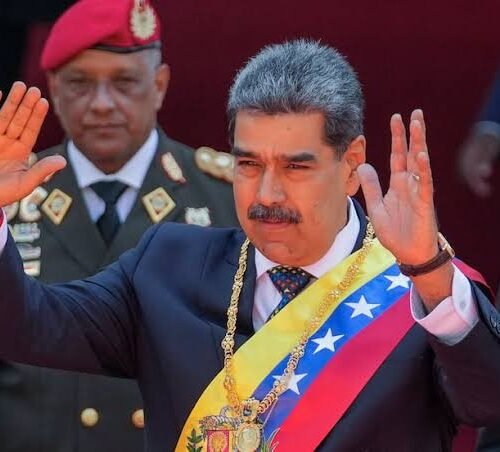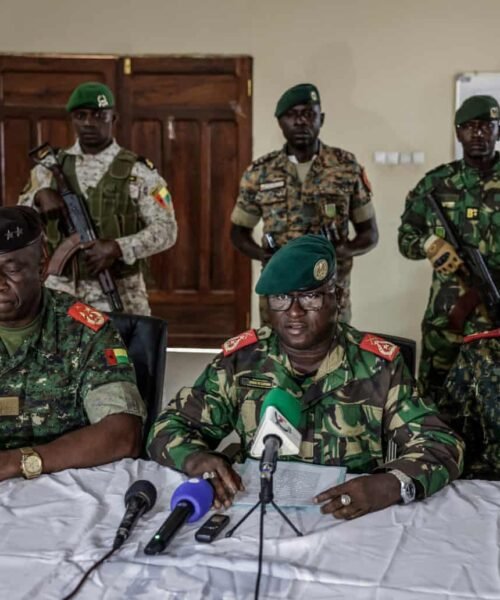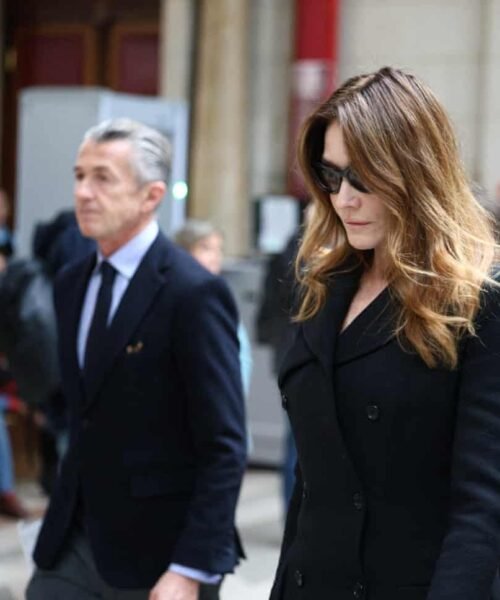*How Youths Toppled Madagascar’s President
*’Ousting, Lesson To Some African Leaders’
As the sun set on Place du 13 Mai in Madagascar’s capital, Antananarivo, thousands of people danced, waved and cheered to pulsating rap and reggae beats and rousing speeches.
When young people started protesting on 25 September, first against water and power cuts, then demanding a complete overhaul of the political system, military police stopped them from reaching the square.
The site has been a symbol of democracy and the focal point of anti-government protests on the Indian Ocean island since 40 student demonstrators were killed there by security forces in May 1972.
Then, on Saturday 11 October, the elite military unit Capsat came out in support of protesters, accompanying them to Place du 13 Mai.
The next day, President Andry Rajoelina reportedly fled the country for Dubai on a French military plane.
Last Friday, Capsat’s Commander, Col. Michael Randrianirina, was sworn in as transitional President for what he said would be 18 to 24 months.
Young protesters, who had rallied as Gen Z Madagascar, were jubilant at the ousting of Rajoelina. Many were grateful to Capsat, which is responsible for military personnel and logistics. Some were worried about transitioning to military rule rather than a new civilian regime. All said they intended to keep fighting for a better Madagascar.
Reaction
Antonio, a shaggy-haired 17-year-old wearing a black face mask, bounded off stage after making a speech to the rapturous crowd in Place du 13 Mai on Wednesday evening. “I just wanted to say to them that the protests are not finished and that we must be vigilant,” he said.
Antonio, who did not want to share his full name, had warm words for Capsat. “I thanked them for helping us to come here, to this sacred place, the 13 Mai,” he said. “Without them we wouldn’t have made it here.”
But he reserved his most enthusiastic praise for his fellow activists: “I just want to thank Gen Z, the people who truly protested … because it was them who gave us the victory.”
Geo-economic Structure
Madagascar lies off the south-east coast of Africa, stretching almost 1,000 miles north to south. An island of 32 million people, it is rich in biodiversity and natural resources, including precious gems and vanilla.
The former French colony is also extremely poor and plagued by corruption. Last year, its gross domestic product (GDP) per capita was just $545 (£405), the fifth poorest country in the world, according to the World Bank. It ranked 140 out of 180 countries in Transparency International’s 2024 corruption perceptions index.
How Immediate-past President Came To Power
While Rajoelina was a civilian ruler, he also came to power in a coup instigated by Capsat – short for Corps d’administration des personnels et des services administratifs et techniques (administrative body of personnel and administrative and technical services) – which backed him after he led three months of anti-government protests in 2009.
Rajoelina, a former DJ who had risen to become Mayor of Antananarivo, stepped aside as President in 2014 in favour of an ally, Hery Rajaonarimampianina.
He returned to the Presidency in the 2019 election and again in 2023, a vote that was boycotted by the opposition, which claimed the poll had been rigged.
Incompetent Leadership
The lot of Madagascar people has barely changed under 51-year-old Rajoelina. The country’s still tiny GDP per capita has risen just 22% since 2009. Only 5% of the population have a formal salaried job, according to the International Monetary Fund (IMF).
The population has more than doubled in 30 years, with more than half under the age of 20, according to the World Health Organization (WHO). It is no wonder, then, that young people were liable to revolt when two councillors in Antananarivo were arrested in September for trying to organise a protest against water and electricity outages.
How Youths Organized Against Bad Leadership
A leaderless group calling itself Gen Z Madagascar quickly formed online, with Facebook and Instagram accounts.
They coordinated on Discord, a platform mainly used for socialising while gaming, and the secure messaging app Signal. Many only knew each other by aliases, members said earlier in October.
They took direct inspiration from other Gen Z movements against corruption, including in Indonesia and the Philippines.
A particular influence was Nepal, where the government was toppled in September, with Malagasy activists joining the Nepali Gen Z discord to pick up protest tips.
Moroccan young people then took to the streets in October under the name GenZ 212 (the 212 for the country’s international dialling code), protesting against poor education and health services.
Gen Z Madagascar adopted the skull and crossbones flag from the Japanese anime series One Piece, which was first flown in Indonesia in August and then in the Philippines in September. Instead of the original straw hat, the skull wore a pink and green satroka bucket hat from Madagascar’s Betsileo ethnic group. The flag is now flying in Place du 13 Mai.
Security Reaction To Early Protests
The initial reaction of Malagasy security forces was brutal. At least 22 persons were killed in the first days of the protests in September, according to the UN.
It said some were shot by the gendarmerie – police under the command of the Defence Ministry – and others killed in violence caused by criminal gangs and looters.
Rajoelina disputed the toll, claiming last week there were “12 confirmed deaths and all of these individuals were looters and vandals”.
However, the shooting and killings did not stop the protesters straight away when Capsat said on Saturday 11 October that it would not fire on protesters and called on the rest of the military to “join forces” with it.
Damage From Protests
On 10 October, Aina Sarobidy Randriamiharisoa travelled 75 miles after finishing his work as a mining truck mechanic to join the protests the next day.
“What motivated me to go in the first place is that I am aware of what is happening in the country. That something is wrong and change is needed,” he said.
Randriamiharisoa marched north with about 20 friends on Saturday afternoon. About a mile away from Place du 13 Mai, the gendarmerie pelted them with teargas. Then, Randriamiharisoa was shot through his left thigh by a live bullet.
“I really just thought it was teargas, I felt pins and needles all over my leg,” said the 28-year-old, lying in an otherwise empty hospital ward on a Dora the Explorer sheet, under a duvet cover patterned with cartoon penguins, as relatives handed him water and milk.
When Capsat emerged from its barracks further south, around the time Randriamiharisoa was shot, the gendarmerie briefly resisted and was accused by Capsat of killing one of its soldiers. On Sunday, the gendarmerie released a video statement admitting to “faults and excesses”.
Randriamiharisoa underwent two operations, but never regained the feeling in his left foot. Then his toes started to turn black. On Wednesday, doctors amputated the leg above his knee.
“I’m just thinking in a positive way. I did it for my country,” he said, adding that he hoped to find a sponsor to buy him a prosthetic leg and then return to work.
As for the military takeover, Randriamiharisoa said he was uncertain about the soldiers’ intentions: “I don’t know if there’s something behind it, if it’s politics or if they just want to profit off the situation … because it’s like that almost every time in Madagascar.”
Perception Of Military Role In The Protests
Dr Velomahanina Razakamaharavo, a research fellow at the University of Reading, said that “for a long time, Capsat was viewed as being on the wrong side of history” because of its role in the violent 2009 coup.
She added: “This time, however, public perception has shifted … Capsat’s decision to step in was seen as an act of courage and solidarity with the people. Their intervention altered the power dynamics and stopped further bloodshed.”
What has happened in Madagascar should serve as a hard lesson to several African leaders who adopt populist slogans and methods to access power, only to fail the people, an intellectual in Madagascar said.
Randrianirina, Madagascar’s new military ruler, was formerly the Governor of the southern Androy district. He was arrested with an accomplice in November 2023 on accusations of plotting a coup, just before the most recent disputed elections, and handed a one-year suspended prison sentence.
*PHOTO CAPTION: The leaderless group calling itself Gen Z Madagascar took direct inspiration from other Gen Z movements against corruption. Photograph: Siphiwe Sibeko/Reuters.



